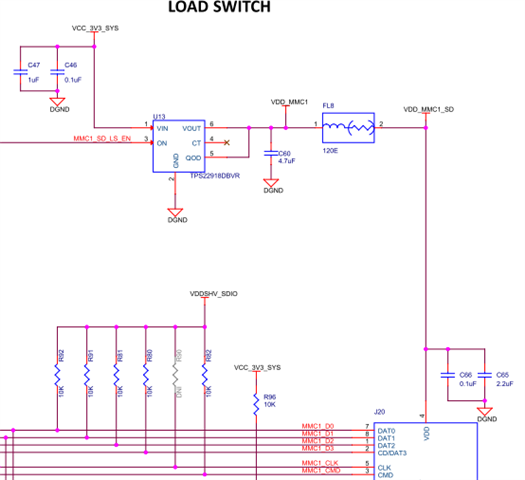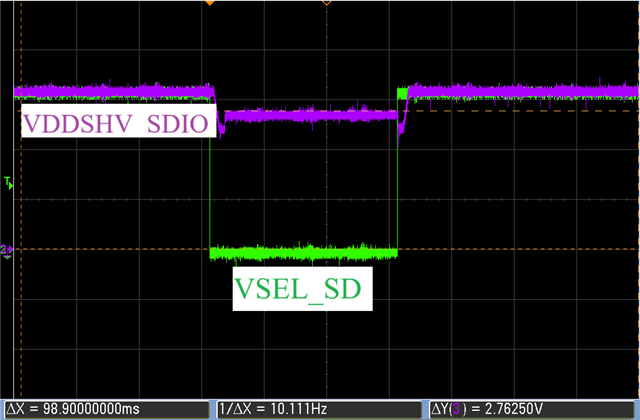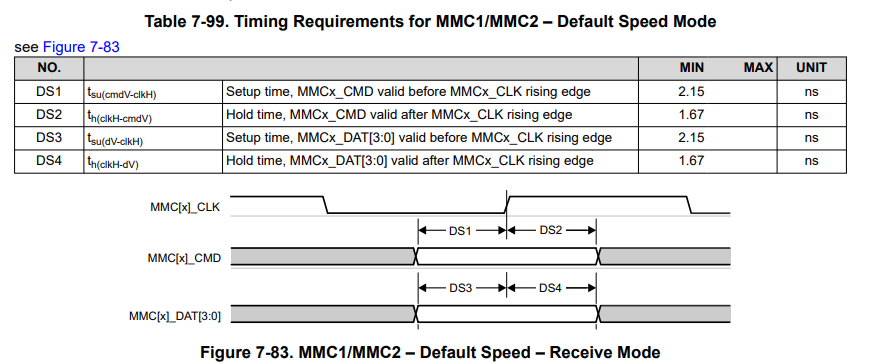Other Parts Discussed in Thread: AM623
Tool/software:
Hi
We refer to the circuit of EVM SK-62P-B1, which uses the TPS6521904 PMIC and is paired with the AM6234 CPU. According to the EVM test results, when booting from an SD card, the AM623's GPIO0_31 should output a "low" to the PMIC's VSEL_SD pin, causing the LDO1 output voltage VDDSHV_SDIO to switch from 3.3V to 1.8V.
However, when we use the EVM SD card to boot our own board, AM623's GPIO0_31 is not pulled to "low", but to a strange half-level position, making the LDO1 output voltage become about 2.5V.
We've conducted our own experiments: disconnecting the AM6234 from the PMIC's VSEL_SD pin. Simply pulling up the PMIC's VSEL_SD pin produces 3.3V, but pulling it down drops it to 2.8V. This seems to be a major issue. The relevant circuit diagram is shown below. Is there anything we can fix? Please help.
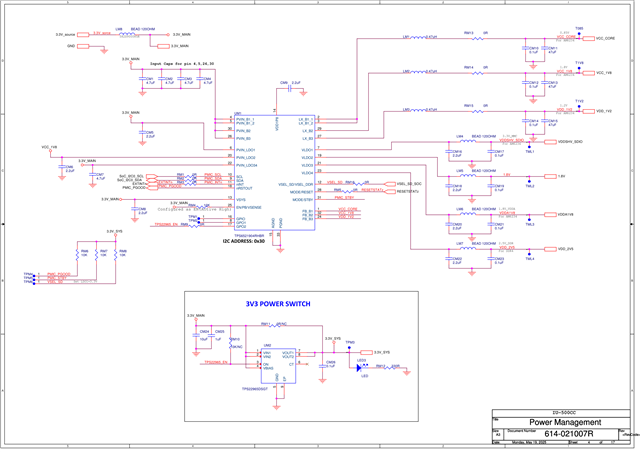
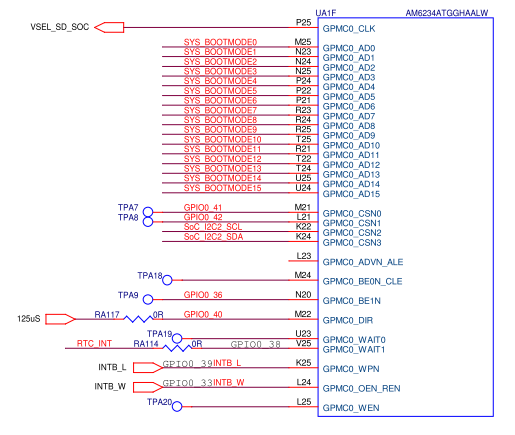
Thanks.


